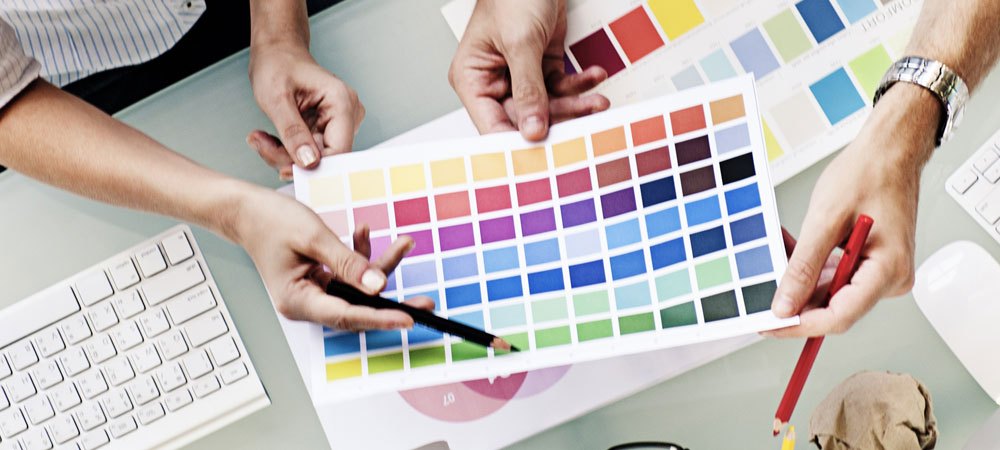
It requires creativity, psychological insight, and science to design a retail store, whether it is a coffee shop, small boutique, or a high-end fashion store. Did you know that the atmosphere of your retail store affects your customers’ purchase decisions?
In this article, we’ll cover the common tactics of planning a fashion store layout and atmosphere to create a successful business.
Must read: How to Design the Perfect Atmosphere for your Coffee Shop?
Start at the beginning: The Floor Plan.
Believe it or not, the atmosphere of your fashion store starts with the floor plan. Store floor plans play a critical role in managing traffic and store flow. Your decision will depend on various factors such as the size of your store, the products you sell, and, more importantly, your target market.
Who are your customers? What is their shopping style? Are they hurried or patient? Will your associates guide them throughout the store, or would they prefer to be left alone? Are they looking for the exact items they need as quickly as possible or are they willing to discover products along the way?
These are just a few questions you have to ask yourself before choosing your floor plan. You would want to design the store in a way that your customers get the best possible experience they can, and they come back! When designing the layout of the store, answering the following two questions will help you decide:
- Are you aiming for quick shoppers?
- Are you aiming for customers that stay longer and discover and purchase additional products?
Fun fact: According to a study, nearly all shoppers automatically turn to the right first and browse the store counterclockwise in the U.S., unlike in the U.K. and Australia, where left-hand traffic often causes shoppers to turn left when entering a store. Keep this fact in mind when creating a layout plan for your store.

Building Your Brand’s Story
There’s a story behind every brand and its founders. Your brand story speaks for you and represents who you are. It portrays your business’s beginnings, values, objectives, and mission.
A brand’s story emotionally connects the founder with its employees and customers, creating long-term loyalty. We recommend investing in a brand strategy consultant to build your brand’s story. These professionals can make a big difference in your brand’s lifelong success.
“Don’t know what is a brand story and why you need it? Click here to learn more”
Use lighting well for the perfect atmosphere
Lighting can dramatically impact how long your customers stay in the store. Warm yellow light bulbs are easier on the eyes and bring a warm, earthy feel. Bright fluorescent lights can give off a colder vibe that can become increasingly unwelcoming the longer a shopper spends in your store.
If you have higher-priced or exclusive items, adding spotlights over the displays will make a difference and draw attention to them.
For the dressing rooms, lighting becomes extra crucial. Most shops pay little attention to the dressing room lighting, which may contribute to lesser sales. Excessively bright lighting emphasizes problematic areas like dimples. Bluish LED lights make faces look pale and hair lifeless. Your customers need to feel good in the dressing rooms to try on more products and eventually buy more.
Appeal to multiple senses
Research shows that the most successful stores appeal to as many senses as possible; sight, sound, smell, and touch – in some cases, even taste. Let’s look at what this looks like in practice.

Color scheme matters
When designing your fashion store, one of your first steps should be deciding on the color scheme. You establish the tone and mood for your stylistic theme by choosing a color scheme. While selecting a palette, keep in mind the kind of atmosphere you want to create and the type of experience you want to provide for your visitors.
Your product line is the most significant point to consider when picking a color for your store.
- Are you selling colorful items?
- Are you selling products for teenagers or for mature customers?
- Are you selling products that are considered high-end fashion?
If you sell colorful clothing, your store’s color scheme should be lighter and softer. This way, your customers won’t get overwhelmed and spend more time browsing the colorful products.
Did you know that purple is often associated with royalty and luxury? If your products are on the high-end price tag, we recommend adding accent furniture in a purple palette. – an ottoman, a rug, or velvet purple curtains for the dressing rooms. The research suggests that colors have the power to influence our mood. Generally, individuals will associate specific colors with specific feelings. Kids’ stores can be great places to use pastel colors like blue, green, yellow, and pink. On the other hand, red carries a sense of power and quality and could be a great accent color for a men’s store.
When deciding on a color palette, consider how it will enhance the retail atmosphere, making it a space where customers feel engaged and satisfied.
Scents and Aromas
Creating an engaging customer environment is key to retail atmosphere success, where even the scents and aromas contribute significantly to overall customer satisfaction. Scent marketing, a longstanding strategy, enhances brand recognition, enriches customer experiences, prolongs visits, attracts new patrons, and boosts sales.
Background Music
Background music in retail stores is another powerful marketing strategy that has been used for many decades and by many successful brands.
Must Read: How To Boost Sales with Background Music at Your Store
The key point is choosing songs that enhance (and do not overpower) the atmosphere you want to create. Fitting music for a retail store atmosphere that matches your brand’s story is essential when connecting with your clients.
The volume level and tempo also affect consumer behavior. Usually, fast-tempo and high-volume music will make customers leave the store quickly. However, younger generation clients may not be bothered too much by this type of music, and it can benefit your sales. For that reason, knowing and understanding your target market is crucial.
However, when choosing the best background music provider for your brand, remember that using Spotify, Pandora, or YouTube is out of the equation. These services are designed for personal use and are not for business establishments. The music at your retail store must be licensed to comply with copyright law and prevent infringement.
You can read more about it here: Background Music for Business: Can I use Spotify, Apple & Others?

What is an alternative to Spotify or Pandora?
Subscribing to a commercially licensed background music provider like Jukeboxy Music for Business is cost-effective and legal for business use.
Jukeboxy subscription will provide you with a library of 45+ million songs, over 350 curated playlists, and music licenses by ASCAP, BMI, SESAC, and GMR. With expertly curated playlists specific to retail stores, you can impress your customers with the atmosphere you have created for them, from decoration to music.
Music has the power to connect your brand with your customers on an emotional level which in return helps with repeat business.
Visit our website to learn more about how Jukeboxy helps create the perfect retail atmosphere, boosting customer satisfaction through expertly curated sensory experiences.
For $24.99 a month, we believe Jukeboxy is a fitting choice for your brand that is a cost-effective investment for your retail business success.
Did we mention the 14-day free and no-commitment trial? Read how Jukeboxy’s features can help you create the perfect atmosphere.







